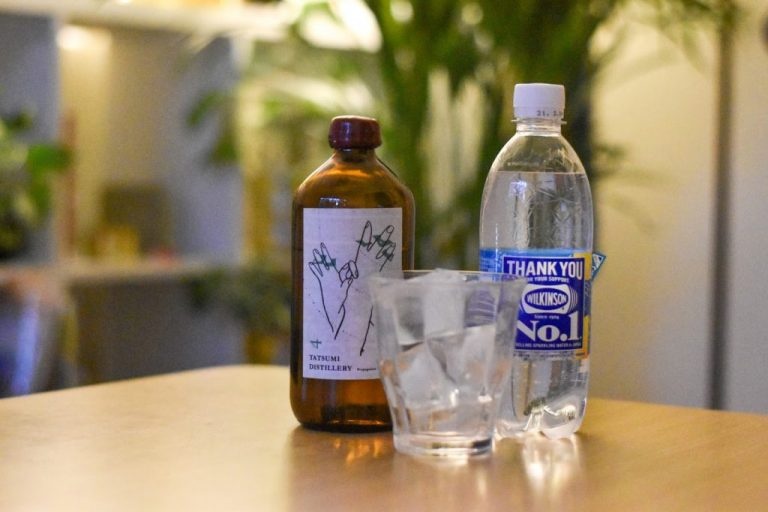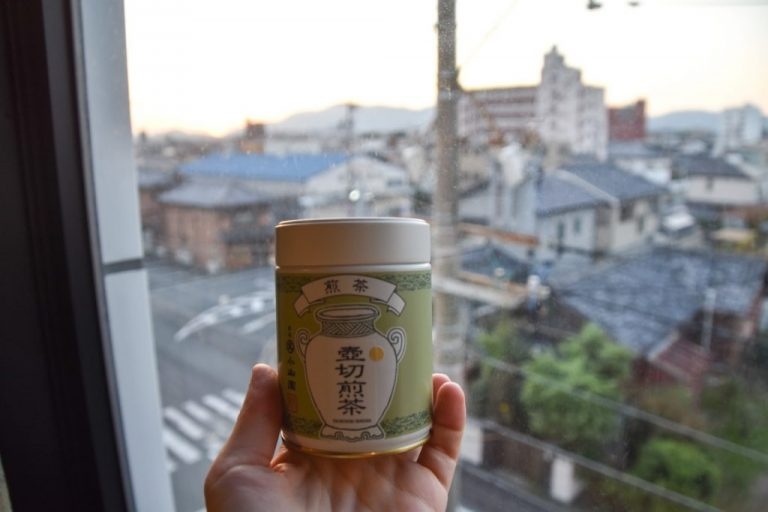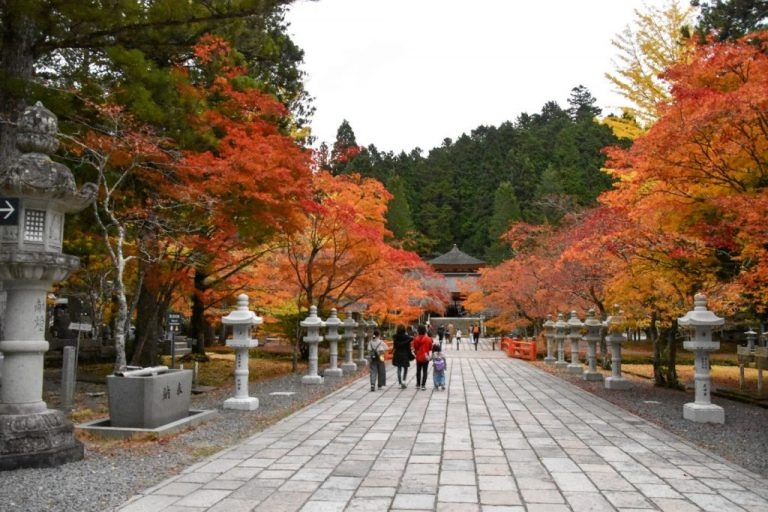Exploring the Many Ways to Drink Green Tea
Getting Tipsy with Green Tea Gin from Tatsumi Distillery

One of the tea combinations I was most excited about trying was the green tea gin from Gifu Prefecture’s Tatsumi Distillery. A collaborative effort with Ryo Iwamoto’s company TeaRoom — the gin uses tea leaves sourced from TeaRoom — it sounded like a match made in heaven.
“The gin has the tea leaf bitterness, it’s really difficult to recognize for some consumers,” Ryo explained when we sampled some of the gin at his Tokyo showroom, “but we as tea masters can feel the essence of the tea.”
Like the botanical flavors in more classical gin blends, the flavors of Tatsumi Distillery’s green tea gin feel implied, almost like a whisper on the palette, rather than an overwhelming concentration of flavor. Bitter but floral, it’s one of the more elegant, sophisticated blends of gin I think I’ve ever tried. I sampled it three ways: straight, tansan (soda water), and lemon tansan. Drinking gin straight is not what I’m used to, but it’s a great way to understand the gin’s complexity.

Regular tansan made for an excellent base. It didn’t compete with the gin’s flavor, and the bubbles almost carried the botanical taste to the top, probably as it dilutes the alcohol strength and gives the flavors more space to breathe. But for me, lemon was the winner. “Gin naturally has limonene,” Ryo explained to me during our chat; he taught me it’s a type of compound that many folks recognize as a lemon-like taste, same as the tansan, which is probably why it hits the #1 spot for me.
Green Tea with Koyo at Mt. Koya

If you’re a fan of Japanese green tea, you may be familiar with the name Sazen; it’s a domestic legacy-level brand that produces incredible teas of all variations. For me, this was the perfect excuse to buy a tin of their luscious leaves, all under the guise of ‘work.’
While writing this article, I was on a series of trips across Japan, one of those stops being a visit to the sacred Mt. Koya in Wakayama Prefecture. It’s an incredibly powerful destination and the home of a community of Buddhist monks who have dedicated their lives to meditation and their spiritual cause.

It was a very apt destination, as Japan’s relationship with green tea has its roots in China’s evolution of Zen Buddhism. In ancient times, Chinese Chan monks would sip on tea as a way to stay awake during long meditation sessions. When Japanese monks traveled to China to study this spiritual tradition, they brought back with them tools, tea leaves, and a new, enlightened arsenal of knowledge on how to brew tea.

During my visit, Mt. Koya was reaching its peak koyo (autumn leaf) beauty. The temples were flanked with fiery leaves of red and orange. I realized mixing Sazen’s incredibly fine quality tea with something novel or even alcoholic felt almost sacrilegious. Also, as Sazen’s CEO Mr. Jotatsu told me, “it’s strongly recommended that you drink sencha alone.” So, to tie it all together and get a nice linking shot, I pocketed one of Koya’s glorious red leaves that lined the temple pathway, washed it, and added it to my brew. It didn’t do much for the tea in the way of taste, but when it comes to tea, Sazen is near perfection, so who am I to mess with it?



